Satiate the giant PHOTOGRAPHY China is changing its eating habits, transforming the entire global agriculture
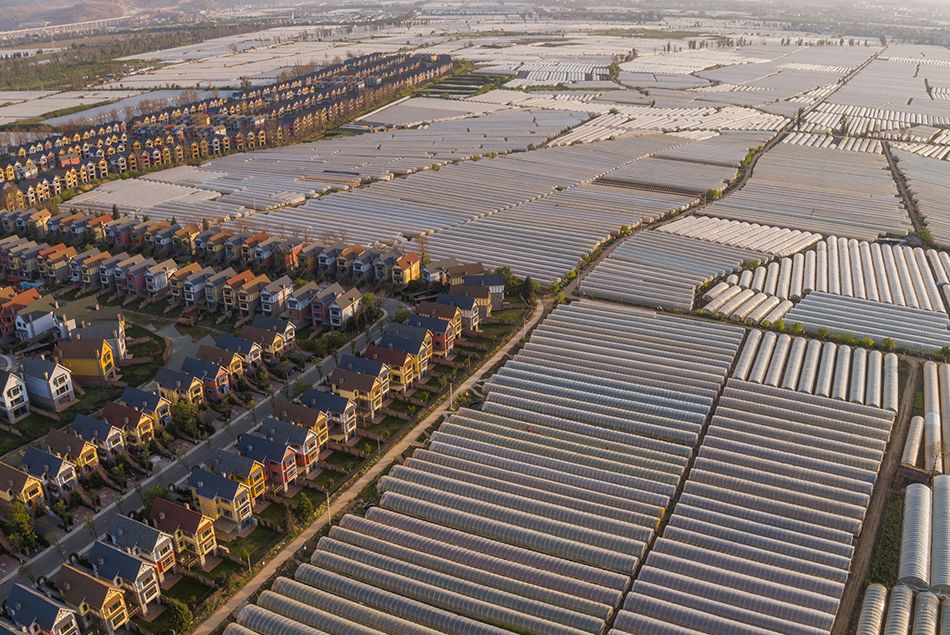
solution may seem simple: replace the patchwork with a large green blanket to be mowed in one fell swoop. But big is not always the best, warns Huang. Maize, rice and wheat, the main crops of base, give a more abundant crop on minor extensions: according to a study, the ideal land has an area between 2 and 7 hectares.
"If a farmer has a very small farm, he cares for him and works very hard", explains Fred Gale, senior economist at the US Department of Agriculture, and his commitment is reflected in the crop, often more abundant than that of those who use large machinery. The Chinese plan is not to unite the possessions of small farmers like Jiang and Ping in huge Kansas-style farms: logistically it would be almost impossible, and the fact of rooting millions of farmers out of their land would cause significant social upheavals.
At least for now, the idea is instead to group together a series of contiguous fields, creating large farms more or less as the parking lot of a shopping center.
After spending a few days in the company of Jiang and Ping it might seem incredible that in China there are also some of the most advanced industrial farms in the world. Examples can be found especially in the dairy and meat processing sector, where there are structures structured according to the Western model.
To see them in person, I had to go to Anhui province, in eastern China, where I visited a dairy opened four years ago, bigger than many similar American factories.
It took me almost five minutes to go through the whole shed of a Modern Farming barn in Bengbu, China's largest dairy farm. The cows - black and white spotted Holstein - were silent. The company, which occupies almost 240 hectares of land, has eight enormous stalls built to house each 2,880 dairy cows; also counting calves and pregnant cows in other stables and shelters, we reach a maximum population of 40,000 animals, one of the largest in the world. The fascination of industrial agriculture lies partly in its dimensions; China has fallen victim to it and has increased the production of meat and dairy products.
A voice that has always been appreciated in its diet is the pig, which was traditionally raised - and killed - in the farmyard; If before 2001 farms with over 50 pigs covered just a quarter of the market, it is estimated that in 2015 three quarters of Chinese pigs left these farms. Industrial farms have also responded to the growing demand for poultry and eggs.
But perhaps the most surprising process of industrialization took place in dairies like the one I visited in Bengbu. Just like pigs raised in the farmyard, dairy products have always been produced on their own; but after the food safety scandal erupted in 2008, when a contaminated infant formula caused the deaths of some children, China pushed the industry to modernize.
Until 2008, almost one dairy cattle out of six had 200 and more animals; in 2013 they had become more than one in three.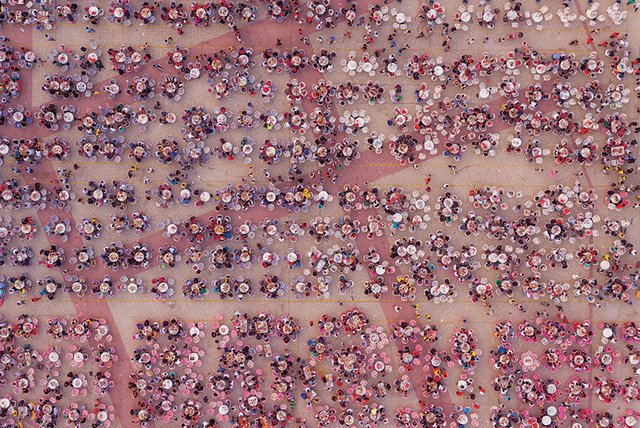
the importance of food security is never too much for Chinese consumers. Apart from the very serious scandal of melamine artificial milk, there have also been the case of asparagus beans treated with an illegal pesticide and that of the adulterated fox meat sold for donkey meat. The large number of small farms means that the Chinese food system is "almost completely unmanageable from the point of view of food safety," says Scott Rozelle, rural Chinese expert at Stanford University.
Dairies and industrial slaughterhouses, on the other hand, make it possible to trace products and assign responsibility for their quality. In the colloquial language, the Chinese use the expression "put your heart down" to invite you to the tranquility and during my trip the farmers have repeatedly assured me that I could put my heart down on their products: in other words, they were safe food .
In the dairy farm of Modern Farming I was introduced to an employee, Zhang Yunjun, who lived with the family where the company's offices are currently located. In order to set up the Bengbu plant, the transfer of a hundred people was needed, to which the State provided accommodation nearby, and when the authorities promised jobs at the dairy, new housing and a regular increase in the fee. 'rent of land, people willingly cooperated.
In the past, Zhang cultivated peanuts and wheat with two relatives on about two and a half hectares of land; today, at 55, she takes care of the litter in the stables and compared to the first she earns twice as much. "People are very happy," he says. "Being a farmer was really hard, and now I can have much larger income".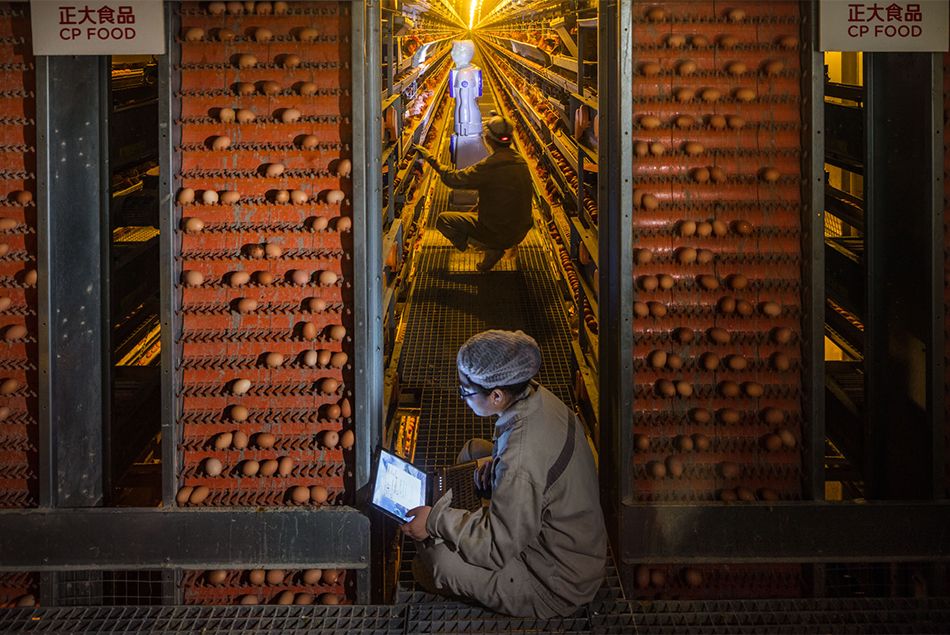
Almost all the supporters of large farms have told me similar stories, saying that they are an effective solution to combat rural poverty. According to the reasoning, a farmer can double the income by working for the big company and renting his land. But reality does not always correspond to this idyllic picture.
"People are hired, it's true, but in very limited numbers," says Ye Jingzhong, a specialist in rural sociology at Beijing's Agricultural University. "If the company wants to make money, it will first cut jobs, and it will take a small amount of underpaid agricultural workers".
As the sun began to set, I visited the translocated village and realized that people were much less enthusiastic about Zhang than the dairy.
These people live in a regular cluster of two-story yellow buildings, surrounded on three sides by peanut and corn fields; Beyond the road, the dairy grass fields stretch as far as the eye can see. Many argue that the assumption of the dairy has not been so many, that their homes fall apart and that for four years the rents of the land are blocked.
Nobody seemed happy to have moved, but to the truth not even so upset. More than anything, a sense of resignation prevailed.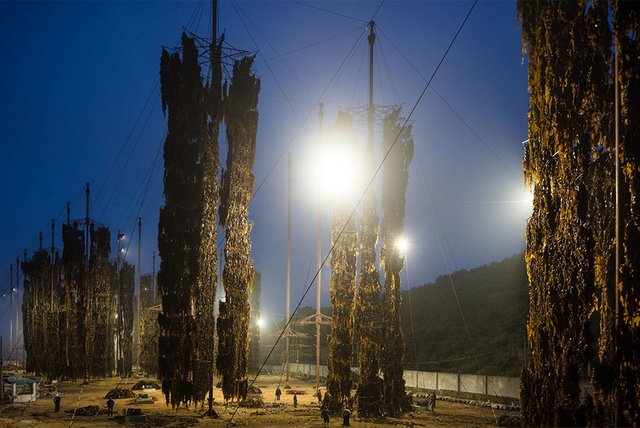
for most of the Chinese rural population these projects are at best a double-edged sword, as they are in any other country in the world. Large farms can offer some a way out of the labors of rural life, but they also entail significant risks for the environment and health.
A census in 2010 by the Chinese government shows that the main cause of water pollution, even more than industry, is agriculture. And with all the challenges facing China in terms of pollution it is difficult to understand how industrial animal production will avoid the problems of pollution and public health attributed, for example, to the Californian dairies, which are smaller than the mega Chinese farms .
The government says it recognizes the dangers and underlines the need to address the issue of animal waste in a sustainable way. These are concerns shared by many Chinese agribusiness companies, including Modern Farming.
In Bengbu, the company has installed a digester for the production of biogas, which turns manure into an amount of energy sufficient to meet a third of its needs and uses by-products to fertilize their fields.
"Waste almost completely cleared", says Liu Qiang, a kind bespectacled guide who accompanied me on a visit to the company. From the fields to the stables, from the milking parlors to the bottling plant, everything, says Liu Qiang, is "a demonstration for the whole country".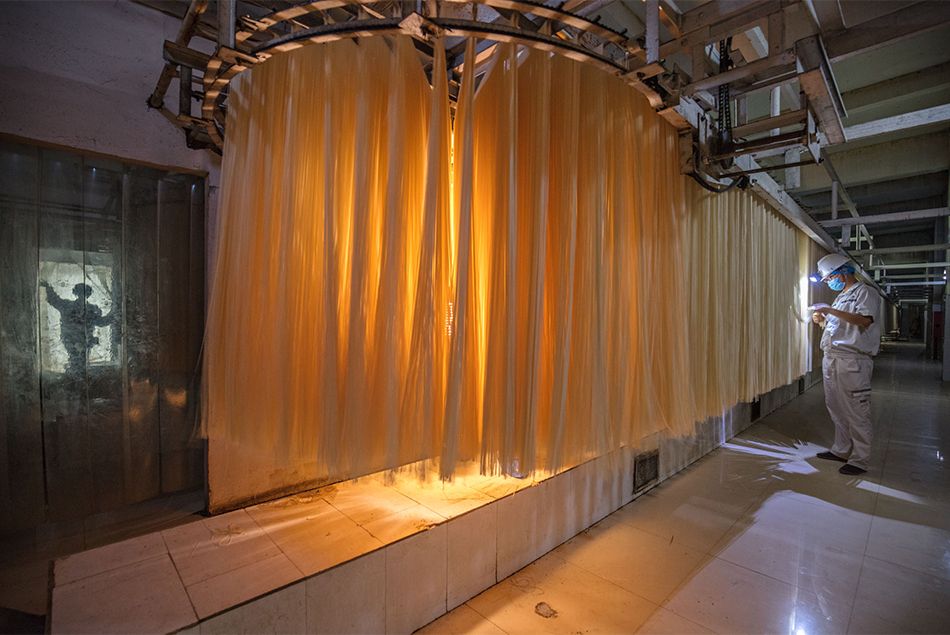
In front of Shangai, on the opposite bank of Hangzhou Bay, a Thai conglomerate of the feed sector is building a mega company with a sustainable vocation on the edge of a glittering muddy expanse. In exchange for favorable conditions of rent and a twenty-year contract, Charoen Pokphand, or CP Group, wants to allocate 2,600 hectares of backwaters to the food production at the gates of the city of Cixi; the goal is to "create value for society in all directions", says Wang Qingjun, vice president of the company.
And China's agricultural future seems to have the same connotations: those of a transnational company that invests billions of yuan in an agri-food complex consisting of fields, farms, factories, administrative offices and, later, even housing for employees, which will include simple apartments as well as villas on the water.
Last summer the rice fields occupied 1,450 hectares of land; of these, 47 hectares were reserved for organic crops and housed crab farms for food use.
There are greenhouses, fields of broccoli, drones for the distribution of fertilizers, a plant almost completed for the production of stuffed ravioli and a breeding of a million laying hens destined to triple, that is to become big enough to justify the use of a thermosensitive robot capable of automatically eliminating dead poultry. The CP Group also plans to collect such a quantity of pollen to be able to produce 20 thousand tons of organic fertilizer each year.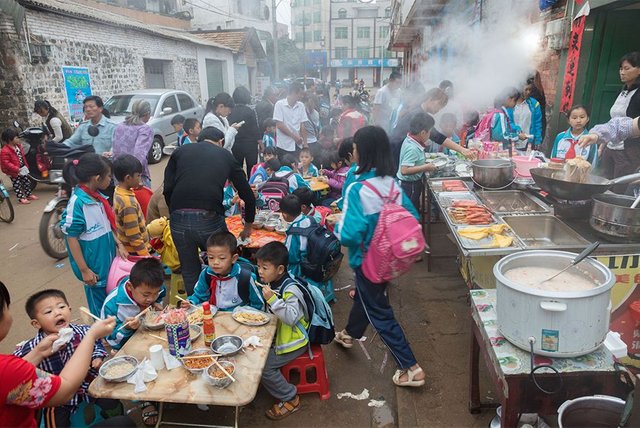
Last year the company built a vertical farm: a transparent and airy parallelepiped containing six 10-meter-high towers, with a revolving shelving like a ferris wheel that houses the plants to be cultivated; when I visited it, there were plants of Chinese cabbage, Chinese garlic and amaranth.
The controlled environment allows a targeted application of fertilizer, eliminates the need to use most pesticides and gives a quadruple crop compared to a field of the same extension, says Wang.
For a country where farmland is too few and farmers are exacerbating pollution problems by using three times the necessary fertilizer, it is a promising prospect, which also prepares the CP Group to align itself with the government's 2015 target of set a ceiling for the use of fertilizers and pesticides by 2020.
The complex represents to a large extent the attempt to apply an industrial logic to food production, and Wang, a figure halfway between the dreamer and the pragmatic, sees it as a future model of vertical integration.
"A relationship of harmony should establish between the human being and the earth," he says, and the system that the CP Group is creating is a way to reach the goal. As far as egg production is concerned, it means cultivating feed grains, raising poultry and, once this has run out of production capacity, slaughtering and processing it.
The company will produce wheat for ravioli pasta, as well as meat and vegetables for the filling; in addition, you can count on its sales points. The project is extraordinary, as long as everything goes smoothly. But if, for example, its fruit were to be attacked by the listeria bacterium, the contamination could spread much more extensively and rapidly than in a decentralized system, as the Americans have learned at their own expense.
Nice info. Keep writing such articles........